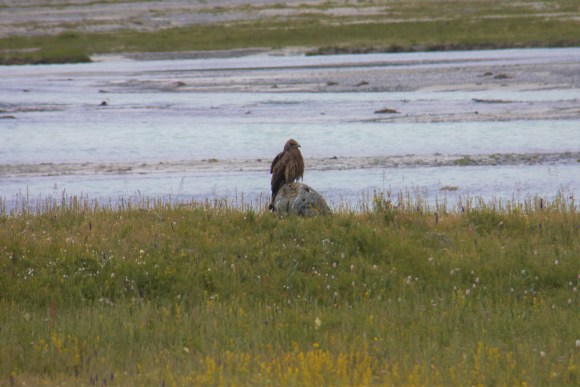Sain bain uu from Mongolia,
I’ve had an epiphany. It should not have taken a trip to Mongolia but I’ve realised that I like animals. It’s actually taken a double negative: I don’t like seeing them suffer.
The nine-day trek through the Altai Mountains was possible because we were accompanied by two wranglers, three horses and two camels (should I mention the cook?!). The camels bore the weight of the bedding, water, food etc. The horses bore the wranglers. They were all doing this because of us. There were times when I felt just a bit guilty or responsible for the suffering of these noble beasts, all on our behalf.
Climbing up a very steep mountain on a 30 km trek one particular day, the horses had to negotiate very steep slopes (same as us, of course) of slippery shale and rock. More than one reared and balked during the tough climb in the morning. Near the top, one of the camels refused. At the top, it began raining and the wind made it difficult for everyone, furry animals included. It’s a little bit distressing to see such wonderful animals struggling on our behalf. I also felt a bit guilty about the humans who were also inconvenienced that day, but at least they had a choice in the matter.
The rest of the trek contained some trying conditions too but these animals were still going at the end, waiting patiently for the return journey. At least they would do the 60 odd kms without a load.
Camels are an interesting case study. They are obviously famous for adaptability to desert terrains, with their splayed toes, hairy noses and tough knees, but their best attribute – appreciated by Mongolians for more than ten centuries – is their capacity to carry big weights over long distances. The Altai Mountains in western Mongolia are not deserts so at least there is ample water and pastures for them. When loaded and moving, the camels plod along at a uniform speed, with a very deliberate gait, head held high and completely silent.
Mongolia’s horses are a special breed, so special in fact that the Mongolian government has placed a ban on sale and export of them, in a bid to maintain the purity of the breed. From what we’ve seen, the Mongolians are brilliant horsemen but their husbandry is built on discipline rather than an affectionate love for the beasts. This means the horses are pushed to perform whatever is within their capabilities, including climb steep slippery mountains in cold wet conditions.

After we stayed for a night with an eagle hunter’s family, I also gained a greater sympathy for the captive eagles, too. The eagle hunting is a unique national pastime (for some) which is apparently done purely for sport. The fledgling eagles are stolen from their nests, high in the mountains. In summer time, the magnificent birds are shackled to a stake. (Some owners offer photo opportunities roadside but our host wasn’t doing that.)

All of these animals are being exploited for human needs; nothing more. Next thought: vegetarianism? It’s a logical step – and after nine days of meat-heavy diet, we are both ready for salads.
Bai Artai from Mongolia
Greg
Other photos from hereabouts


















